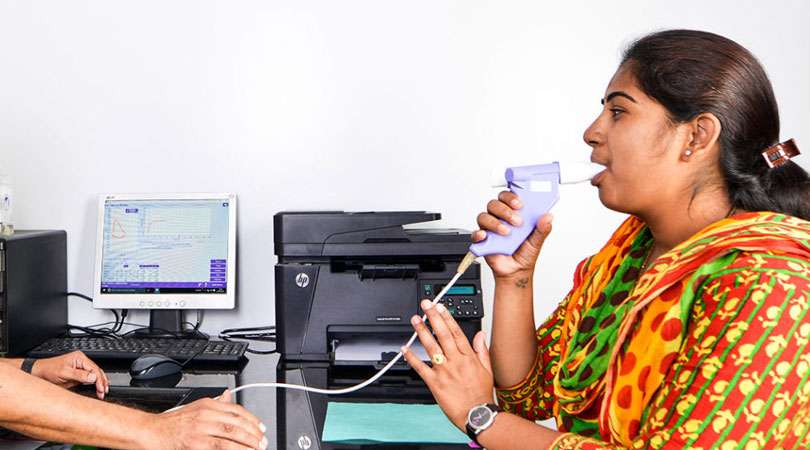
What is Spirometry Test?
Spirometry is a standard test doctors use to measure how well your lungs are functioning. The test works by measuring airflow into and out of your lungs.
To take a spirometry test, you sit and breathe into a small machine called a spirometer. This medical device records the amount of air you breathe in and out and the speed of your breath.
Spirometry tests are used to diagnose these conditions:
- COPD
- asthma
- restrictive lung disease (such as interstitial pulmonary fibrosis)
- other disorders affecting lung function
They also allow your doctor to monitor chronic lung conditions to check that your current treatment is improving your breathing.
Spirometry is often done as part of a group of tests known as pulmonary function tests.
You shouldn’t smoke one hour before a spirometry test. You’ll also need to avoid alcohol that day as well. Eating too large of a meal could also impact your ability to breathe.
You shouldn’t smoke one hour before a spirometry test. You’ll also need to avoid alcohol that day as well. Eating too large of a meal could also impact your ability to breathe.
Don’t wear clothing that’s so tight that it could restrict your breathing. Your doctor may also have instructions about whether you should avoid using inhaled breathing medications or other medications prior to your test.
A Spirometry test usually takes about 15 minutes and generally happens in your doctor’s office. Here’s what happens during a spirometry procedure:
- You’ll be seated in a chair in an exam room at your doctor’s office. Your doctor or a nurse places a clip on your nose to keep both nostrils closed. They also place a cup-like breathing mask around your mouth.
- Your doctor or nurse next instructs you to take a deep breath in, hold your breath for a few seconds, and then exhale as hard as you can into the breathing mask.
- You’ll repeat this test at least three times to make sure that your results are consistent. Your doctor or nurse may have you repeat the test more times if there is a lot of variation between your test results. They’ll take the highest value from three close test readings and use it as your final result.
If you have evidence of a breathing disorder, your doctor might then give you an inhaled medication known as a bronchodilator to open up your lungs after the first round of tests. They’ll then ask you to wait 15 minutes before doing another set of measurements. Afterward, your doctor will compare the results of the two measurements to see whether the bronchodilator helped increase your airflow.
When used to monitor breathing disorders, a spirometry test is typically done once a year to once every two years to monitor changes in breathing in people with well-controlled COPD or asthma. Those with more severe breathing problems or breathing problems that aren’t well controlled are advised to have more frequent spirometry tests.
Few complications can occur during or after a spirometry test. You may feel a bit dizzy or have some shortness of breath immediately after performing the test. In very rare cases, the test may trigger severe breathing problems.
The test requires some exertion, so it isn’t recommended if you recently had a heart condition or have other heart problems.



